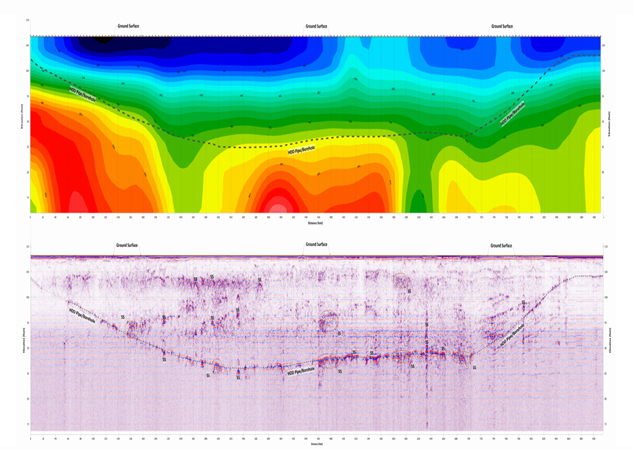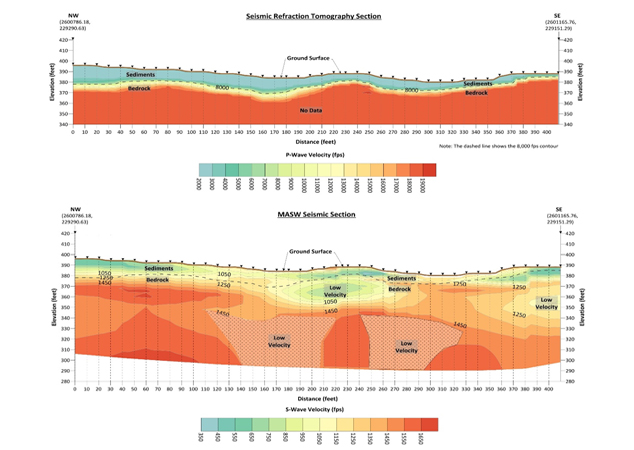Seismic Refraction
Seismic Refraction is a geophysical technique used to study subsurface properties of the Earth, specifically the distribution of seismic velocity within near-surface geologic layers. Seismic waves travel through the Earth at different velocities depending on the properties of the materials encountered. Generally speaking, waves travel faster through dense or ridged materials and slower through less dense or malleable material. By analyzing the refractions of these waves, geophysicists can map subsurface structures and identify potential infrastructure and underground assets.
Key Applications
• Good estimates for depths to (a) bedrock (overburden thickness), (b) consolidated beds, and (c) groundwater. Good for generating 2-D profiles that show bedrock topography and lateral changes in compressional and shear wave velocity.
• Determine the approximate velocities of geologic materials, which may be related to rock type, water saturation, degree of weathering, and the presence of faults, fractures, and weathered zones (low velocities)
• Estimation of Poisson’s Ratio for geotechnical purposes
• Rock rippability (ease of mechanical excavation)
• Detecting intrusive geologic bodies.
• Identifying structural features.
Tech/Instrumentation/Tools
Geometrics – Geode 24-channel seismograph with 4-Hz or 14 Hz geophones, and a 12-16-pound hammer source. SeisImager 2D and SeisImager SW processing software are used to generate 2-D compressional and shear wave velocity images of the subsurface.
Seismic Refraction is a valuable geophysical technique used to study subsurface properties and provide insights into the geological and geotechnical characteristics of an area. It’s applications are diverse and include site investigations for construction to environmental assessments. By better understanding the subsurface, professionals can make more informed decisions to ensure the safety and success of their various projects.
For more information on our multi-faceted services approach, email our VP of Sales, Dave Prendergast at DPrendergast@summitdrilling.com. You can also use our convenient “Start-a-Project” page to provide details about your scope of work and upload reference documents. A Summit representative will respond promptly.







